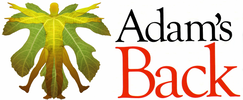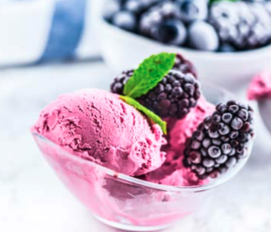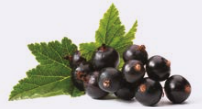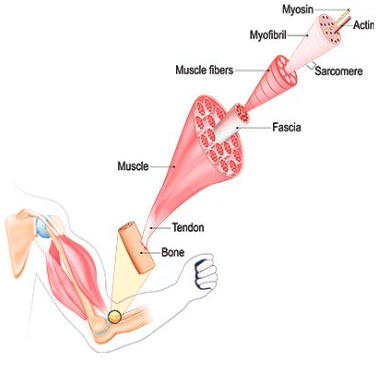Suffering from pain is difficult. It’s quite natural to want to remove discomfort quickly. This often leads our patients to ask about painkillers. Let’s answer from a chiropractic perspective.As chiropractors, we believe that your body has an innate ability to heal. You are, in fact, your own incredible healer. When healing is obstructed, the right interventions can unlock this ability, however we believe medications can interfere with this process. To understand this we first need to look at how pain works.
Your body has pain receptors or nerve endings which are designed to feel sensations in different areas – such as your skin and internal organs. Eventually, all nerves make their way to your spinal cord and then to your brain. Basically, different areas in your brain process and interpret the signals from the nerve fibres to work out the cause and location of the pain, identify any risks of further damage and how much pain you feel. You could say that when you are injured or uncomfortable, it doesn’t actually hurt – it’s your brain making you think it hurts. It’s your body’s way of saying, “Hey, there’s a problem here... stop!” It’s meant to urge you to keep the affected area safe so it can heal. Painkilling medication, by definition, aims to block these signals. When you don’t get the “help” signal, it’s easier to push yourself. You might falsely believe that you’re better because you don’t notice discomfort and this may lead to further damage. It’s also important that you are able to describe your pain to help identify the cause. Chiropractic care is non-invasive, non-pharmaceutical, and is based on the diagnosis and treatment of dysfunction. Or dis- ease. Adjustments may restore motion to the joints of your spine, pelvis, and extremities, and may help with pain. Pain doesn’t have to rule your life. Non-drug therapy − like chiropractic − is the first option we recommend you consider for both effectiveness and safety. The goal is to live your life to the fullest, where you’re in control of the pain and it doesn’t control you!
0 Comments
4/1/2023 0 Comments Festive berry ice 'cream'This berry dessert not only looks stunning, but it’s healthier than traditional ice cream and very easy to make.INGREDIENTS
250g raspberries, partially frozen 300g plain Greek yoghurt 2 tablespoons maple syrup 1⁄2 cup freeze-dried blackcurrants, lightly crushed 1⁄2 cup walnuts or pistachios, chopped (optional) TOPPINGS 25g dark chocolate, grated, flaked, or in chocolate curls Fresh or frozen blackberries and mint sprigs INSTRUCTIONS Place the raspberries and yoghurt in a blender and process until smooth. Stir in the blackcurrants, maple syrup, and nuts (if using). Spoon the mixture into a loaf tin or round tin and freeze until set (about 3 hours). Remove from the freezer for 10 minutes before serving. Decorate with your choice of toppings. Tip: For a creamier texture try part- freezing the mixture, then whisking and returning it to the freezer. It can also be made in an ice cream maker. Serves 8 For centuries blackcurrants have been thought to have medicinal benefits, but recent scientific research has confirmed the powerful healing and protective properties of this remarkable fruit.Blackcurrants have been found to have significant health benefits; particularly in the areas of age-related diseases, brain function and exercise. They contain very high levels of Vitamin C, responsible for maintaining our immune system, healthy skin and hair, and other essential processes. They also have high levels of antioxidants which are known to help protect against many diseases.
Antioxidants and aging One area in which blackcurrants excel is in their polyphenol content – these are antioxidants, which are known to help protect against many diseases. The types of antioxidant in blackcurrants surpass those in most other fruits; they’re anti-inflammatory, antibacterial, anticancer, and help protect against heart disease and the diseases related to ageing. Plant polyphenols can also help protect your skin, meaning that eating more blackcurrants along with a healthy diet could make you look and feel healthier for longer! Brain benefits A new scientific discovery by Associate Professor Dr Jian Guan of the University of Auckland, has found that New Zealand blackcurrants have high levels of a chemical known as cyclic Glycine-Proline (cGP). This is an important brain nutrient, essential for your overall body health and particularly for keeping brain function healthy and normal as you age. Exercise booster Scientists have found that drinking juice from New Zealand blackcurrants before exercising could increase your motivation to exercise and to stick to regular exercise practices. Blackcurrant extract has also been found to help heart function and lower blood pressure during exercise such as brisk walking. Blackcurrants can easily become a part of your diet; they can be eaten raw or cooked and are widely available frozen, freeze dried, or as a powder. This concentrates the nutritional benefits of the berry without adding more sugar. As school heads back for another year it’s the ideal time to check your child’s backpack.Ill-fitting, oversized and heavy bags can strain the spine and trigger neck and back pain and headache.
It’s important to get this right! If you’re unsure about your child’s bag, or whether they’re wearing it correctly, ask your chiropractor for advice. The backpack should:
Congratulations! Becoming a parent is a beautiful, profound experience. But your body takes a toll as it changes to accommodate and give birth.There are hormonal changes, an increased body weight, a further forward tilt of your pelvis and your lower back curve, or lordosis. This loads your joints, ligaments, and tendons, increasing the risk of pain and injury.
Then, after birth, you’ll be lifting, dressing, bathing, and moving a baby averaging 2.5−4.5 kilograms. As they grow, so too, does their weight. Fortunately, as their weight increases you’ve had time to heal and strengthen. But if you haven’t yet healed, this adds to the risk of spinal dysfunction and pain. With this in mind, how can you avoid backache? Moving your baby will soon become second nature, so it’s wise to develop correct lifting techniques. If your child is on the floor, bend your knees, squat, and bring your little one close to your chest. Tighten your core muscles, then push up with your legs − not your back − and try not to twist. Consider a baby wrap and then a supportive carrier to offset some of the workload. Perched on one hip is not ideal. When bottle or breast-feeding, sit in an upright chair, bring baby towards your chest and cradle them comfortably. Use a pillow to support the weight of your baby. A pillow designed for breast-feeding is a wonderful tool to protect your back from strain. As your little one grows, think about how you move them. Once they’re big enough to sit in a highchair, remove the tray when lifting them in or out. When transferring bubs in and out of the car, take them out of the car seat first; it might seem easier to lift them in the seat, but it’s not easier for your spine. When you’re ready, begin to gently strengthen your deep core muscles. Rectus diastasis − the separation or “splitting” of the abdominal muscle − affects up to 60% of people at some point in their postnatal journey. Strengthening your core may repair this problem. Regular walking can also aid recovery, plus, heading for a stroll can boost your mood and fitness. Your chiropractor can advise on suitable ways to strengthen and exercise during and after your pregnancy; and discuss treatment options for low back and pelvic pain. Being a new parent is challenging enough without having to deal with backache. Observing these simple tips will help to minimise the risk of back pain and allow you to enjoy every moment with your little one. Have you heard of fascia? If you haven’t, you’re not alone; this tissue type is present throughout your body but there isn’t a lot known about it.What is fascia?
The old-school definition is that fascia is formed by layers of connective tissue that act as a ‘packing tissue’ for your organs, muscles, and bones. However, recent research is changing the way we view this incredible tissue. A 2018 article published in the British Journal of Sports Medicine describes fascia as a “continuum of loose and dense fibrous connective tissue that permeates the body and enables all body systems to operate in an integrated manner.” In other words: fascia is made up of different types of tissue that connect every part of your body and allow it to function in a unified way. What does fascia do? Fascia has many essential roles. By attaching to certain tissues it provides stability and strength, separates muscles, and enfolds and supports organs and nerves. It also contains a substance that allows the fascial layers to slide smoothly over one another. Just like lubricant in an engine, this stops various parts in your body from becoming stuck, damaged, and dysfunctional. Fascia also appears to be linked to musculoskeletal pain, proprioception (the sense of where your body is in space), and your lymphatic system − essentially a drainage system in your body which plays a major role in your immune defence. Can you improve fascial function? Fascia thickens and becomes ‘sticky’ from: lack of physical activity, injury − including repetitive strain injury (RSI), and aging. Although we can’t stop aging, we can reduce the chronic low-grade inflammation (dubbed inflammaging) that often accompanies it; and we can improve our lifestyles. Choose a healthy diet filled with fresh fruit and vegetables, leafy greens, wholegrains and high-quality protein. Move often, stretch regularly and maintain good posture. If you suffer from an injury, aim to repair the damage. Manual fascial techniques can effectively release “stuck” fascia so they once again slide. Foam rolling can improve mobility in the deeper fascia and also increase slide between fascial layers. Exercise regularly. Try Pilates, Tai chi, or yoga. Keeping your fascia healthy has many benefits; you’ll be able to move easily, have more flexibility and experience less pain. Ask us if you have any questions... and stay tuned for more information! |
AuthorAdam's Back is a team of dedicated complimentary health professionals. Our aim is to support you in finding drug-free solutions for better health. Archives
July 2024
Categories |
Search by typing & pressing enter







 RSS Feed
RSS Feed